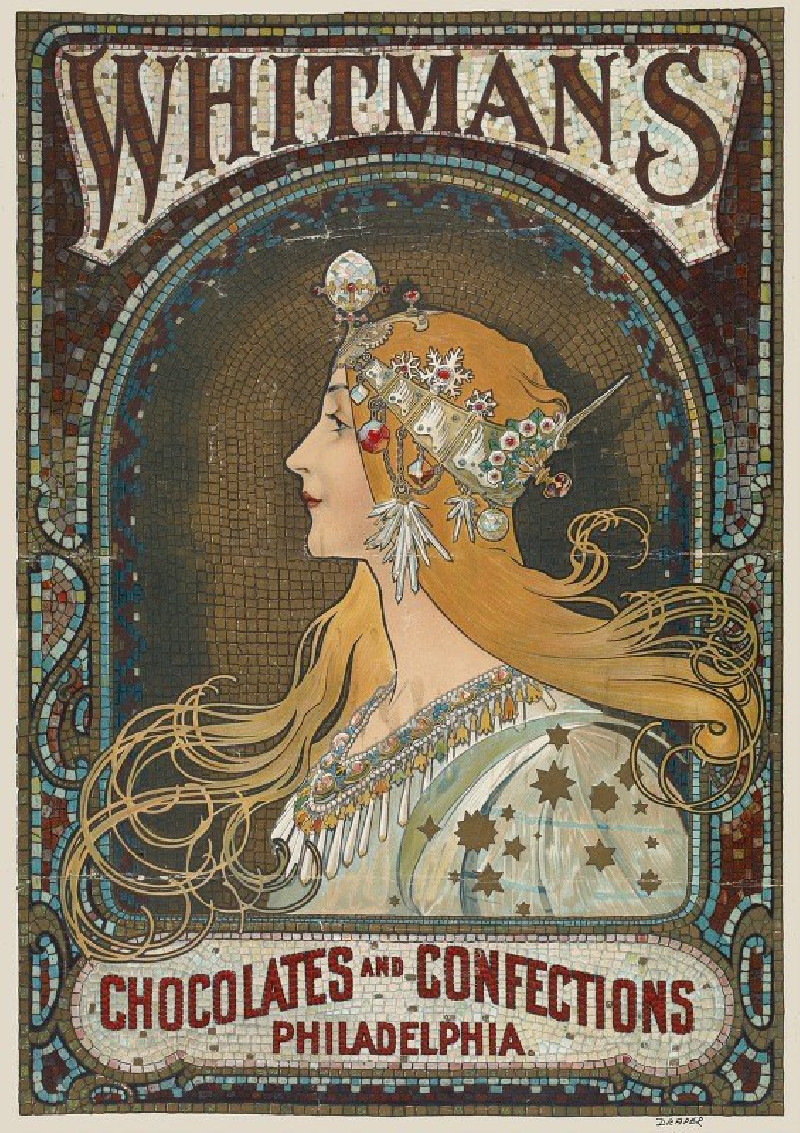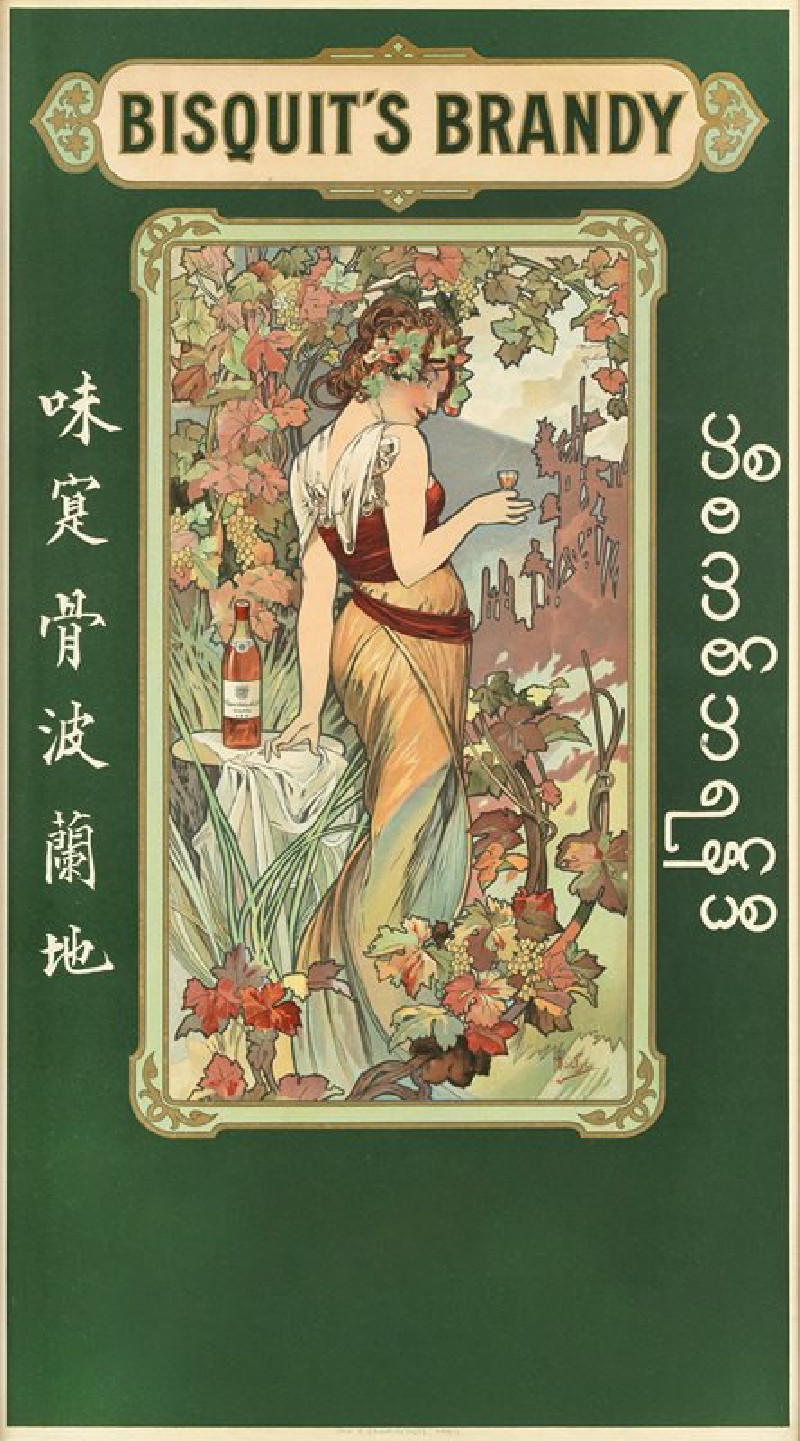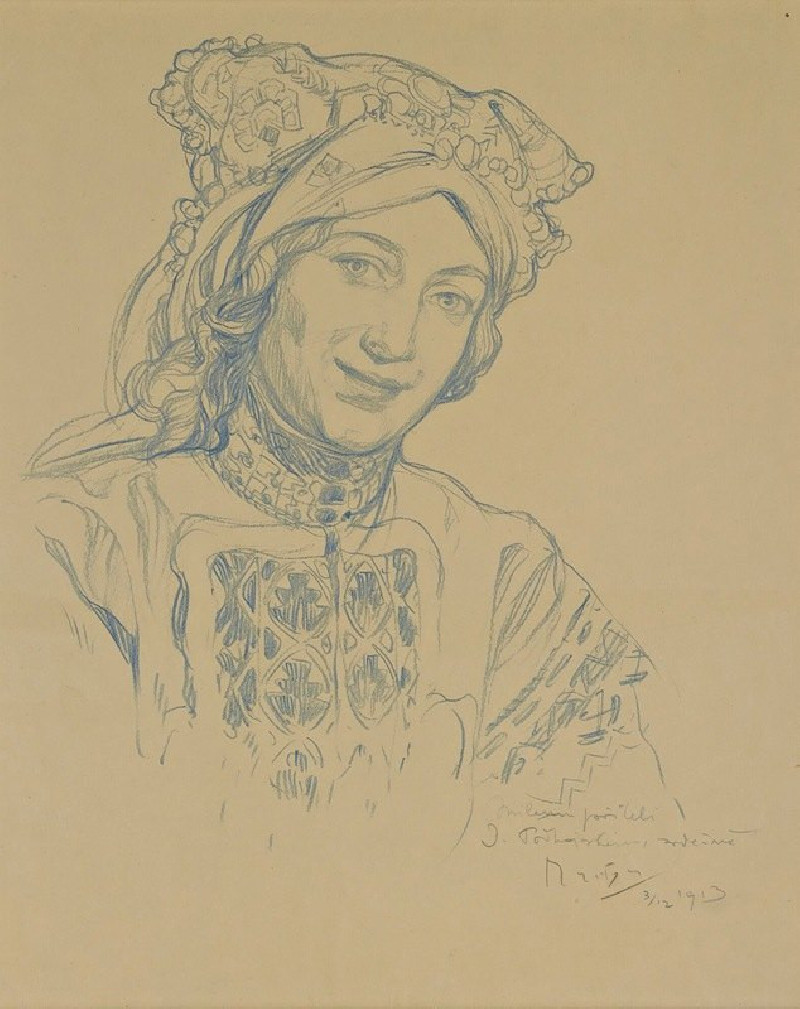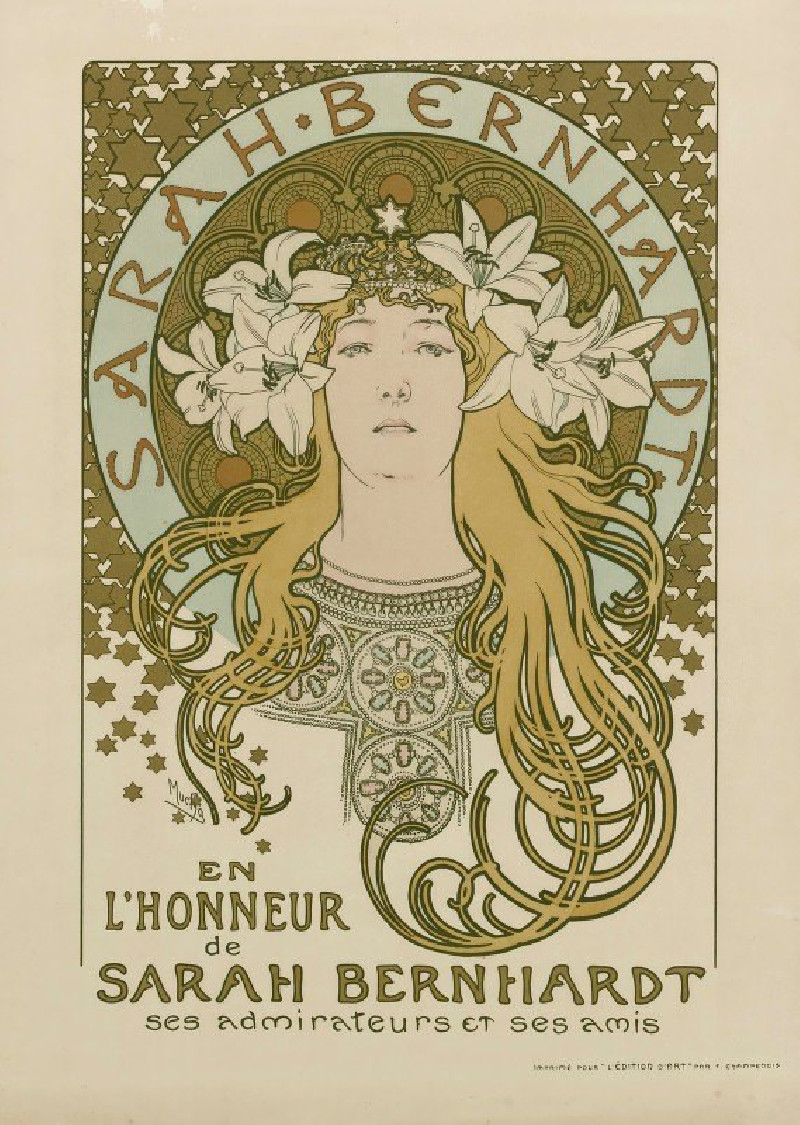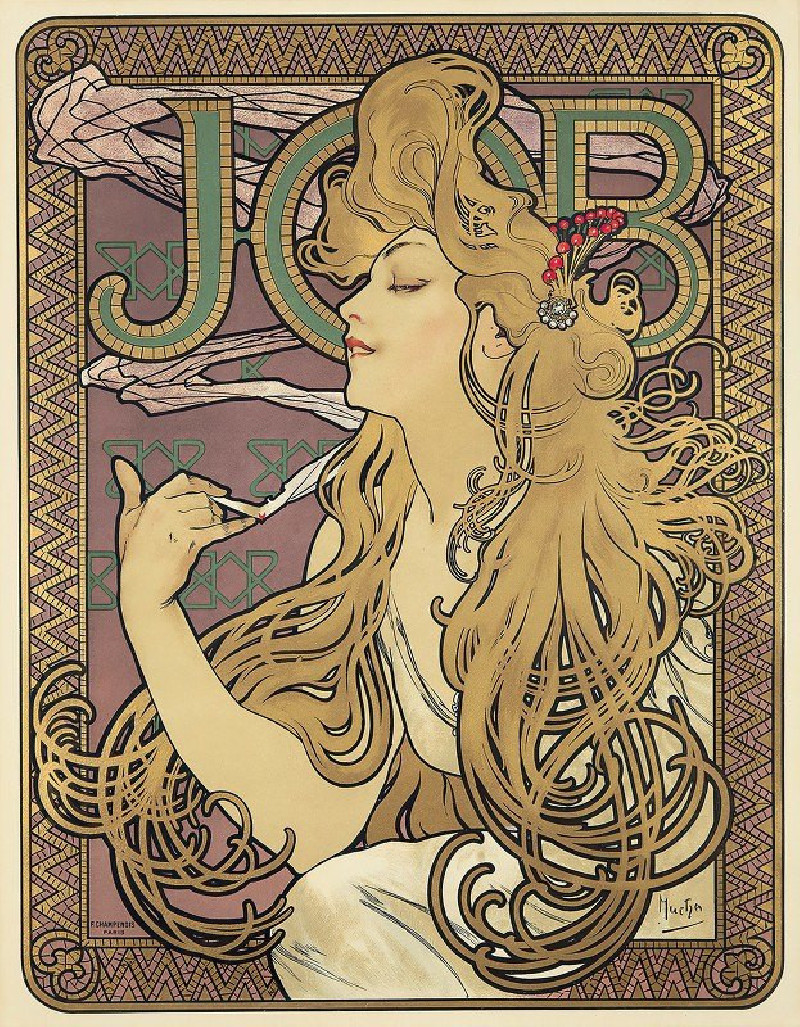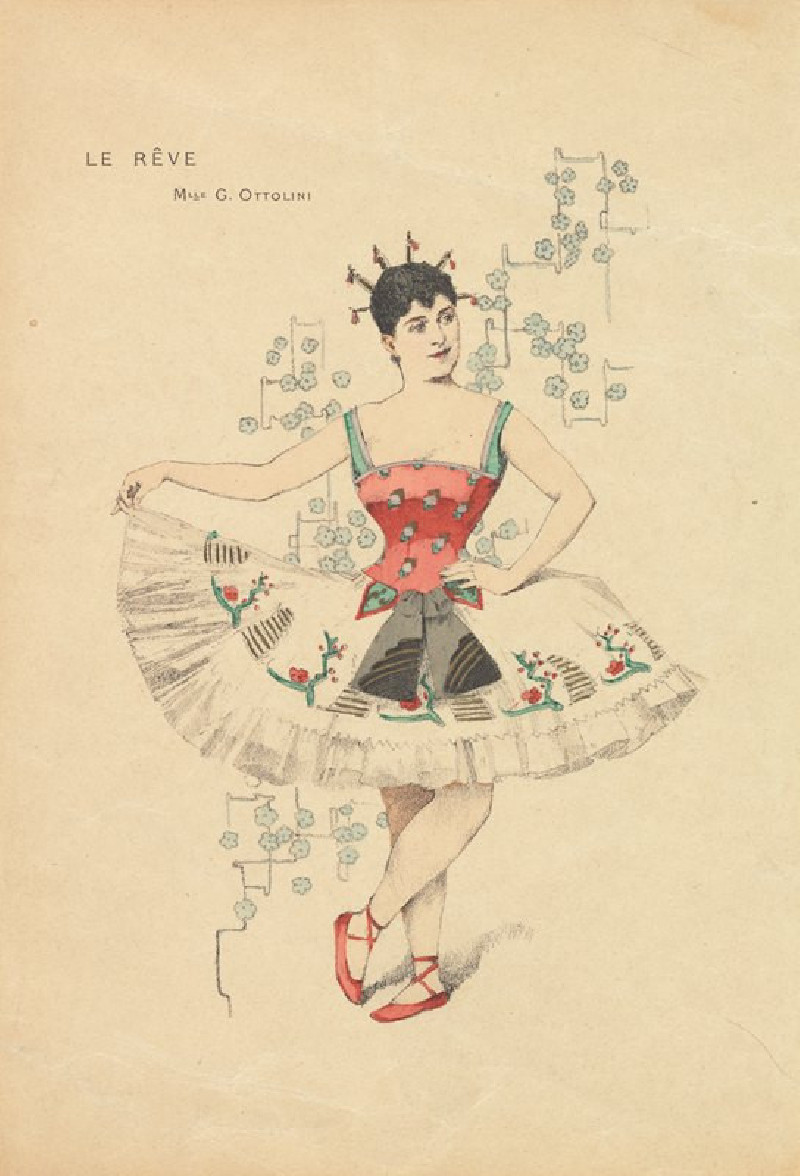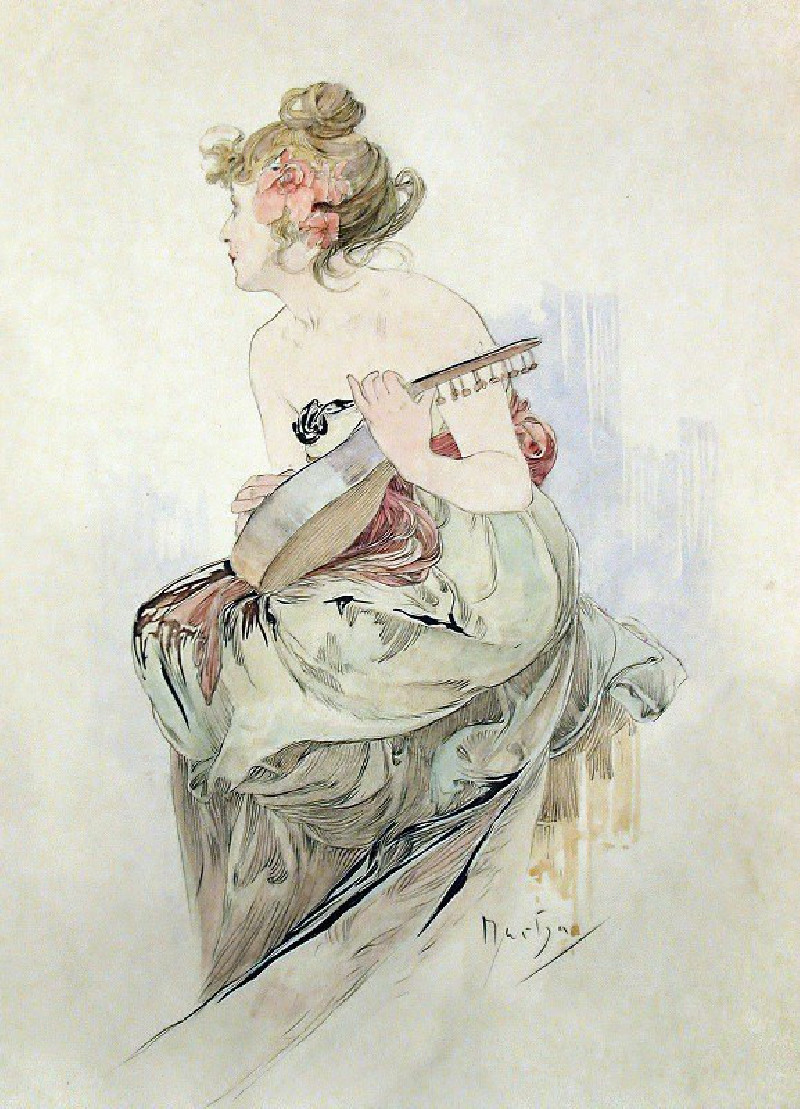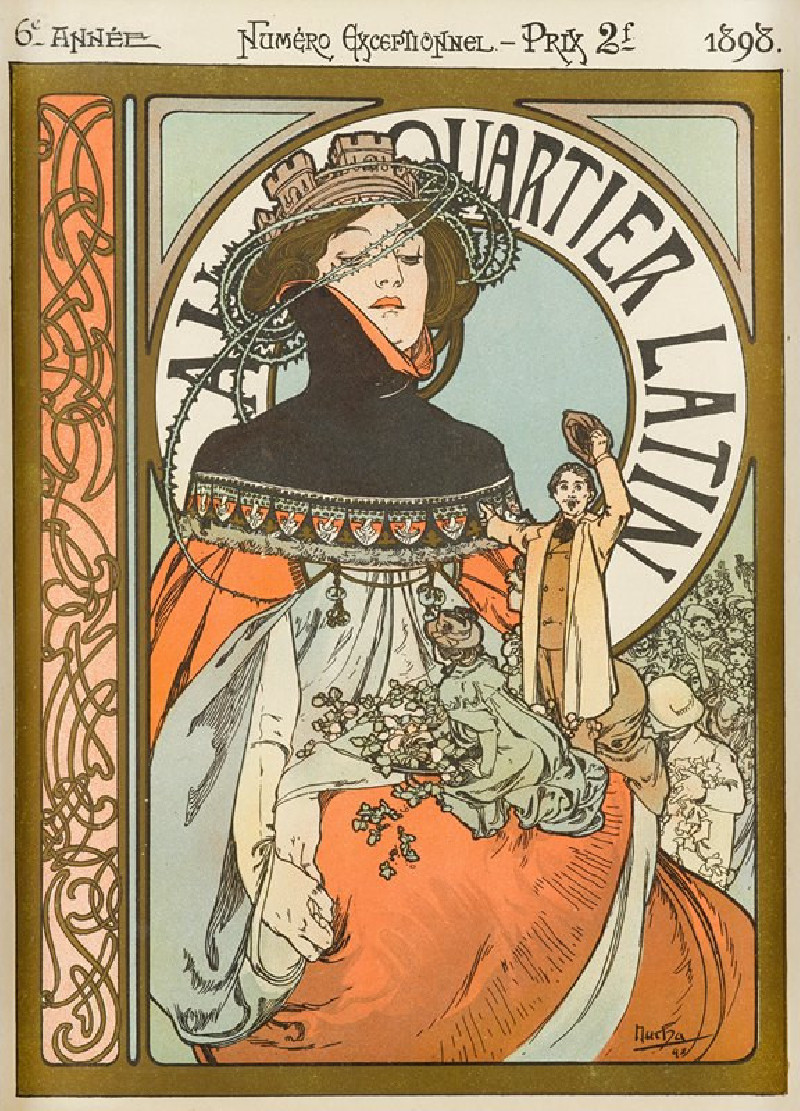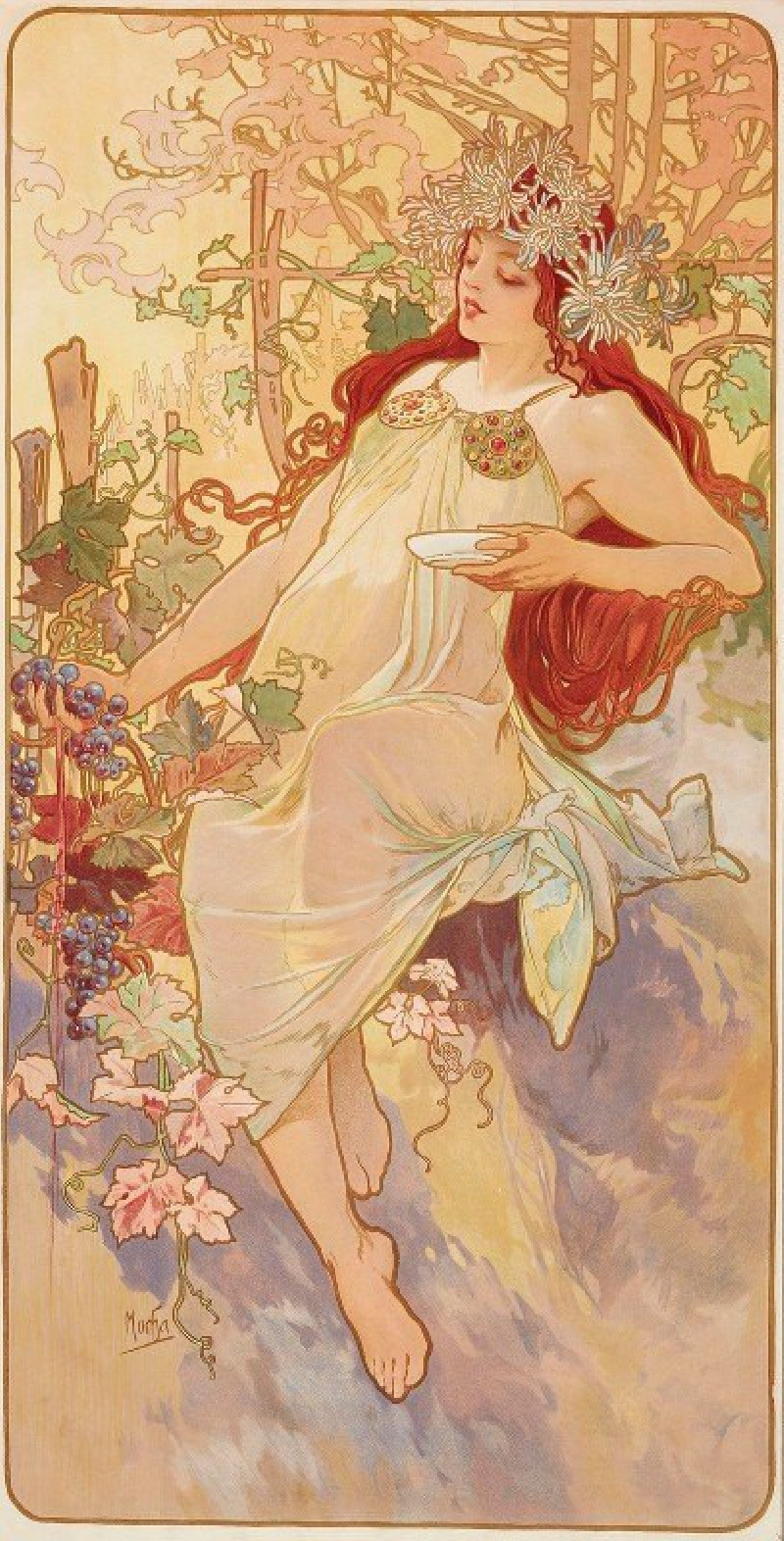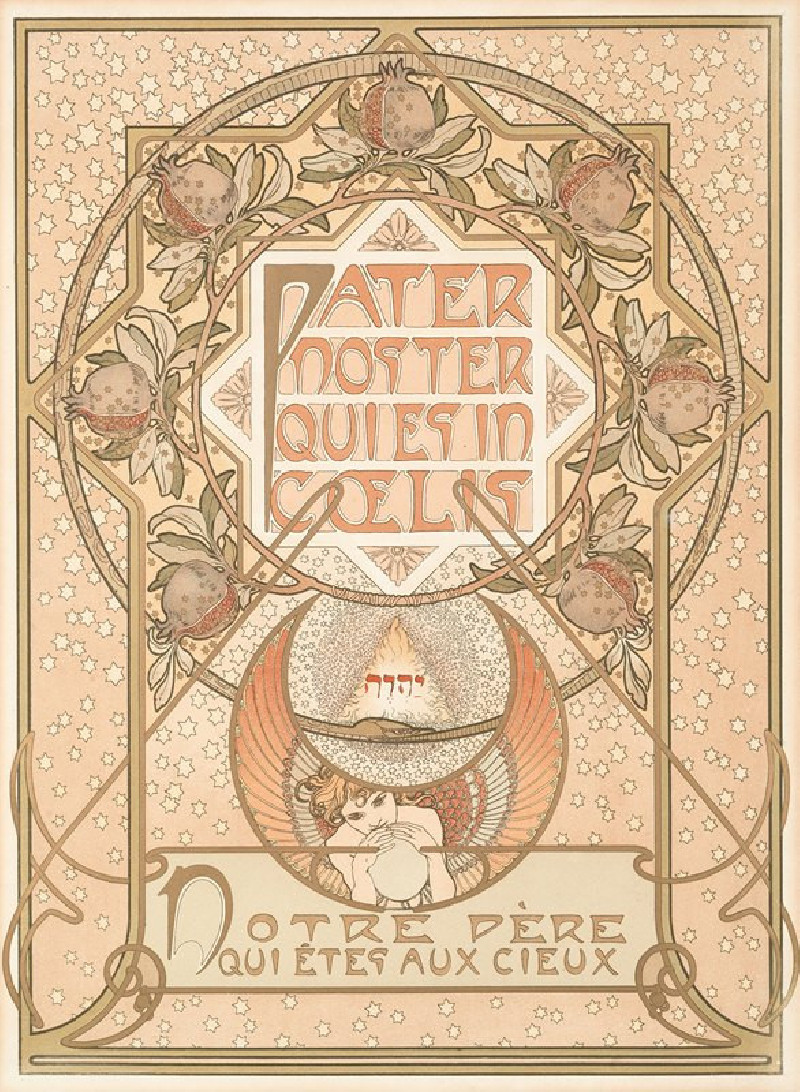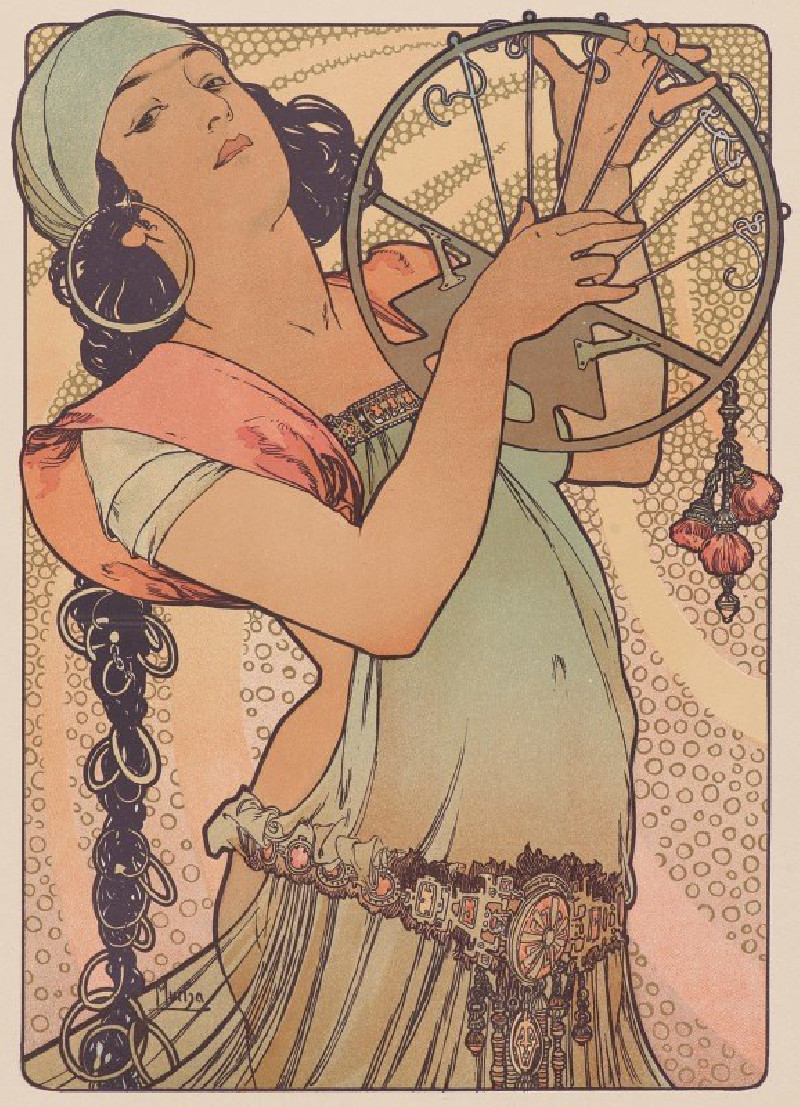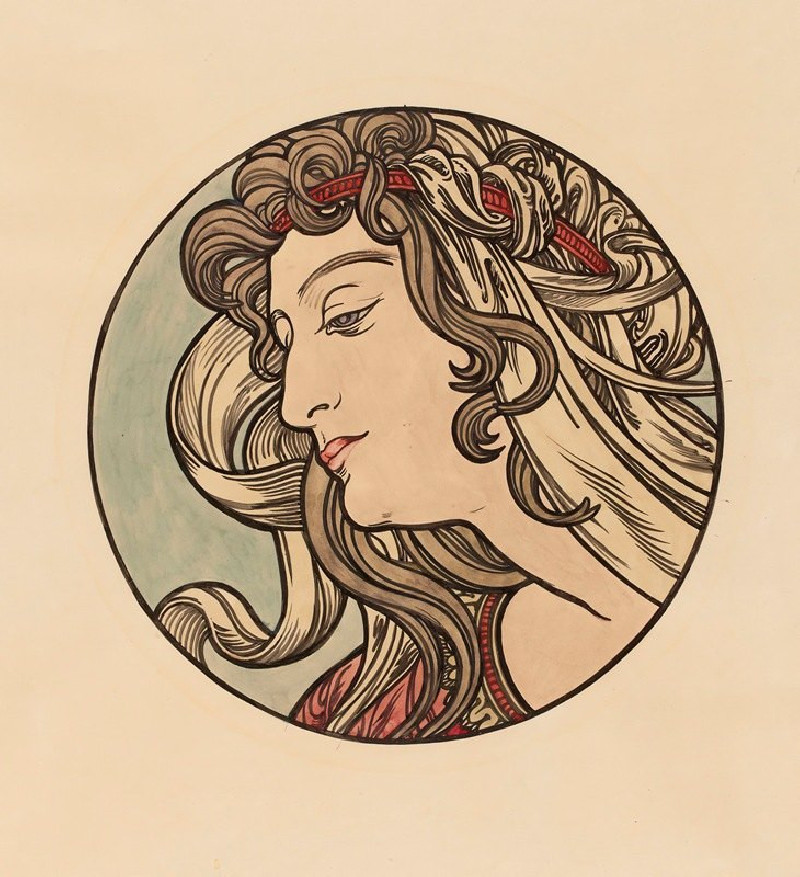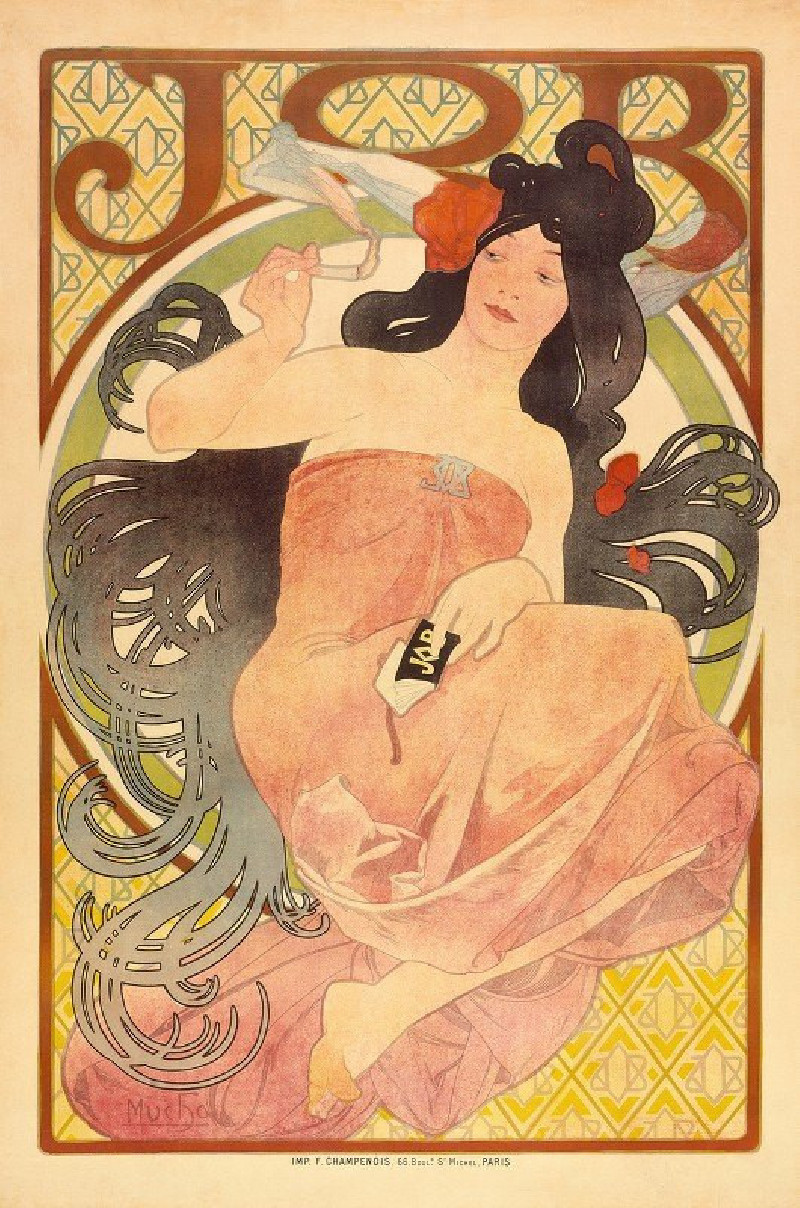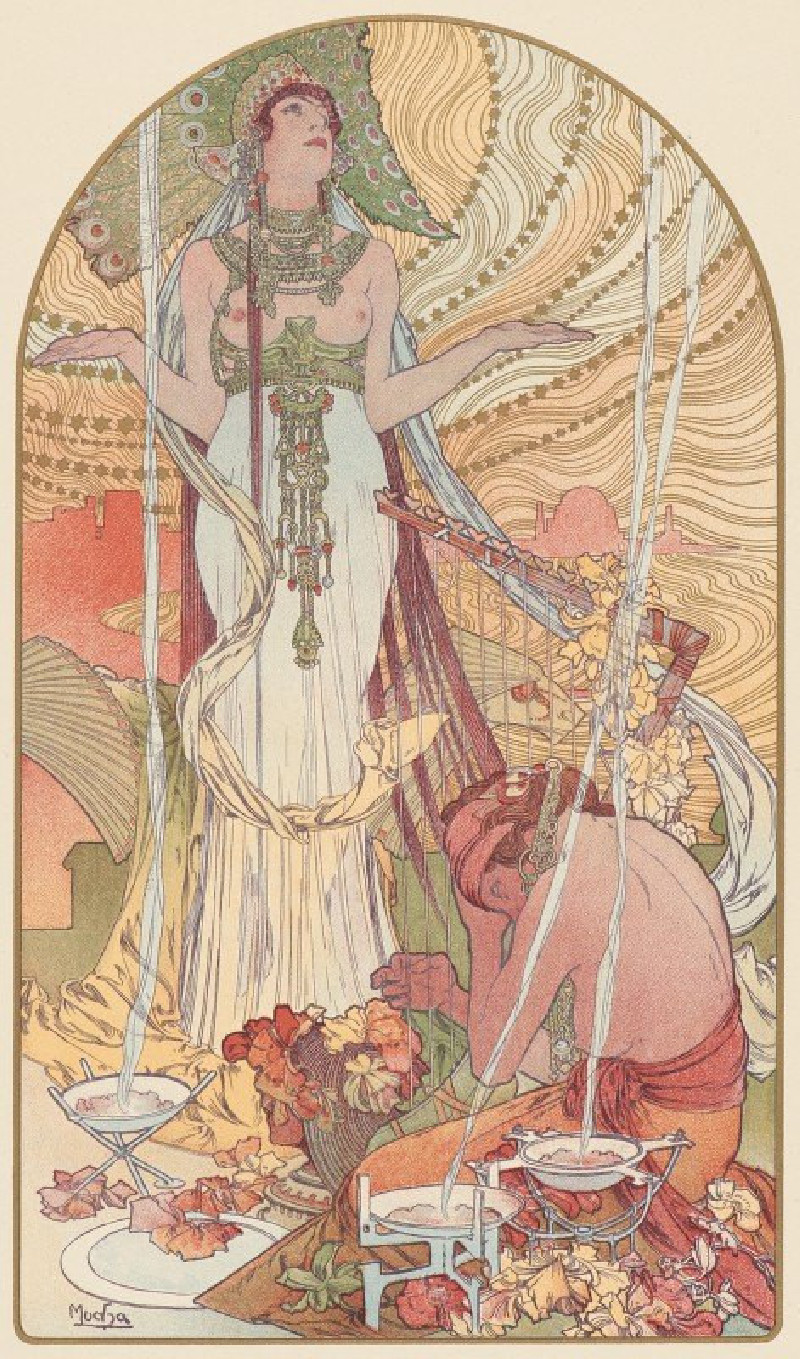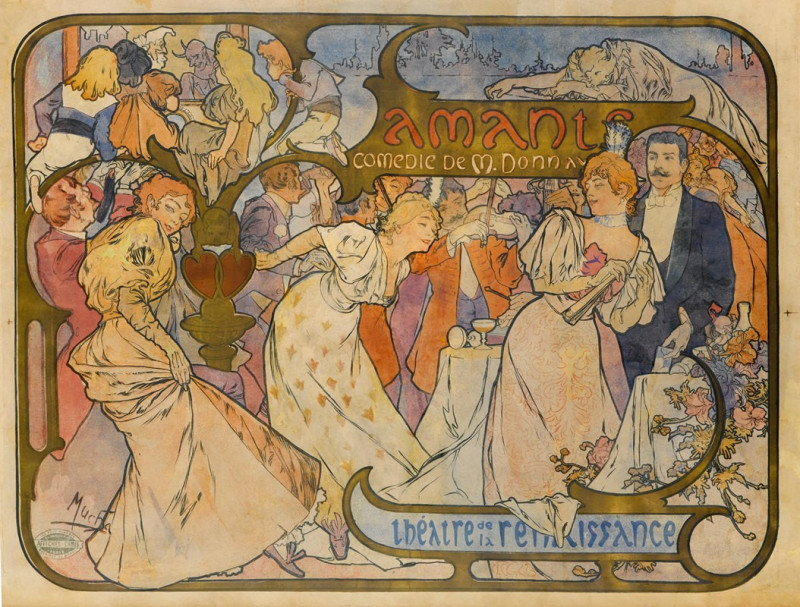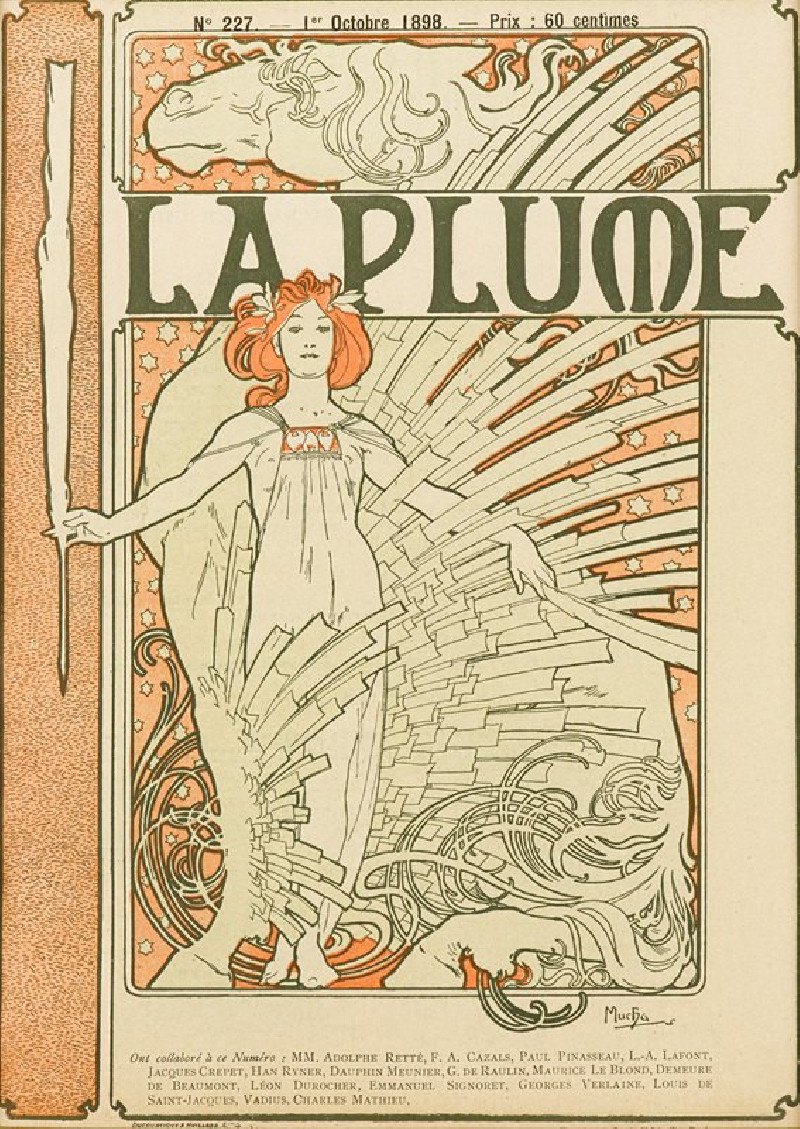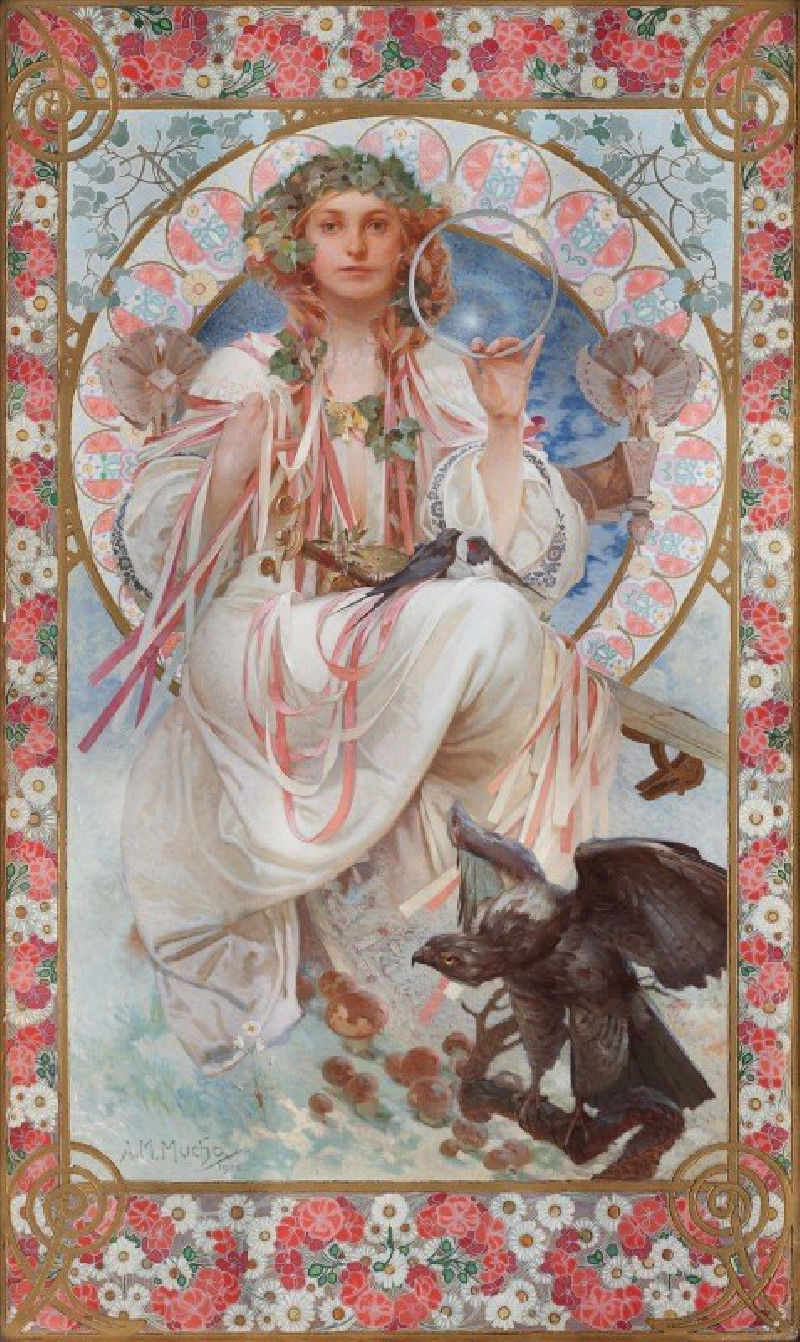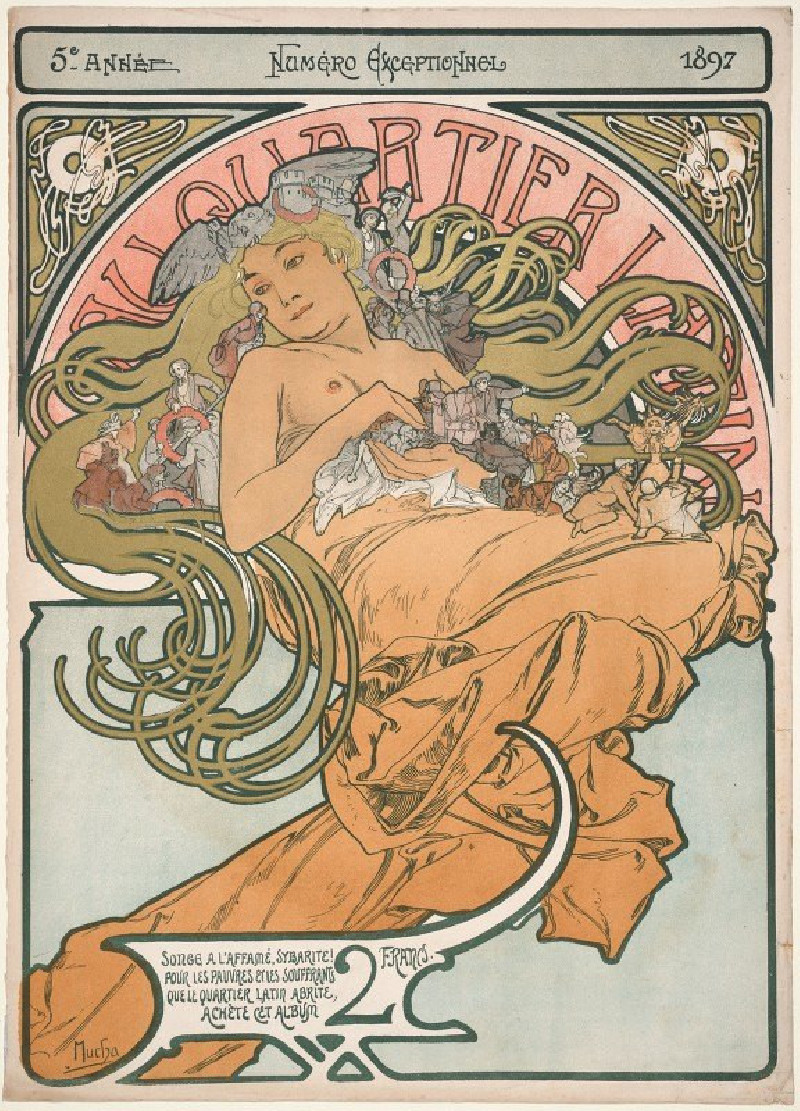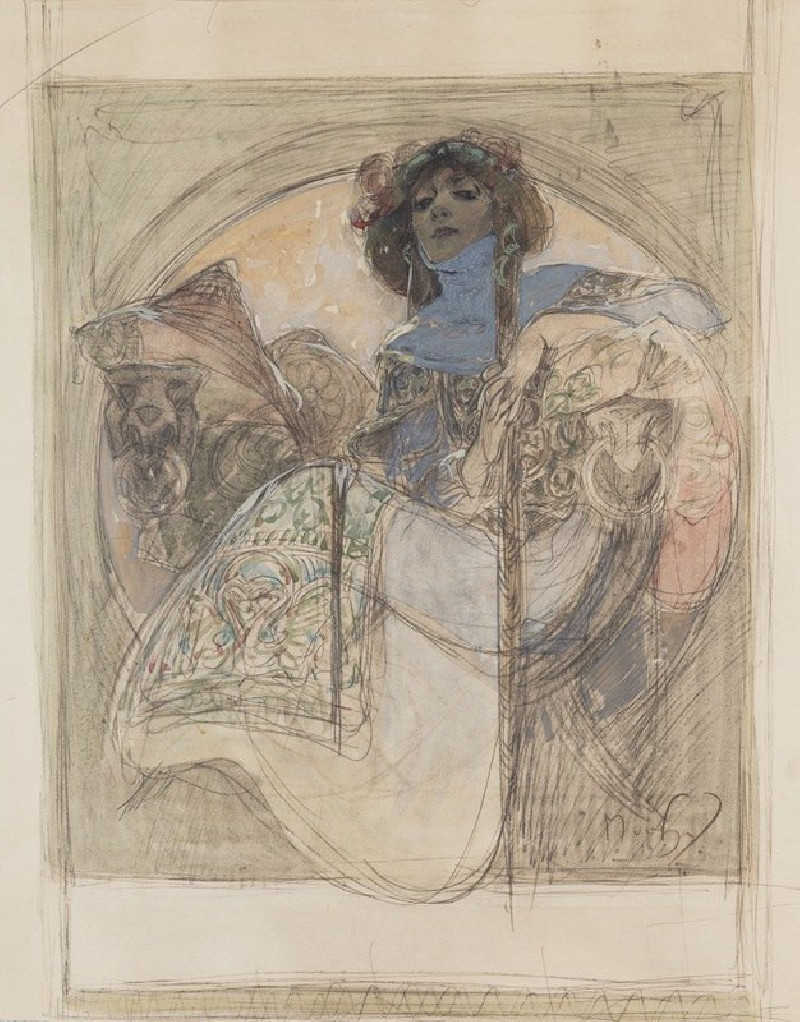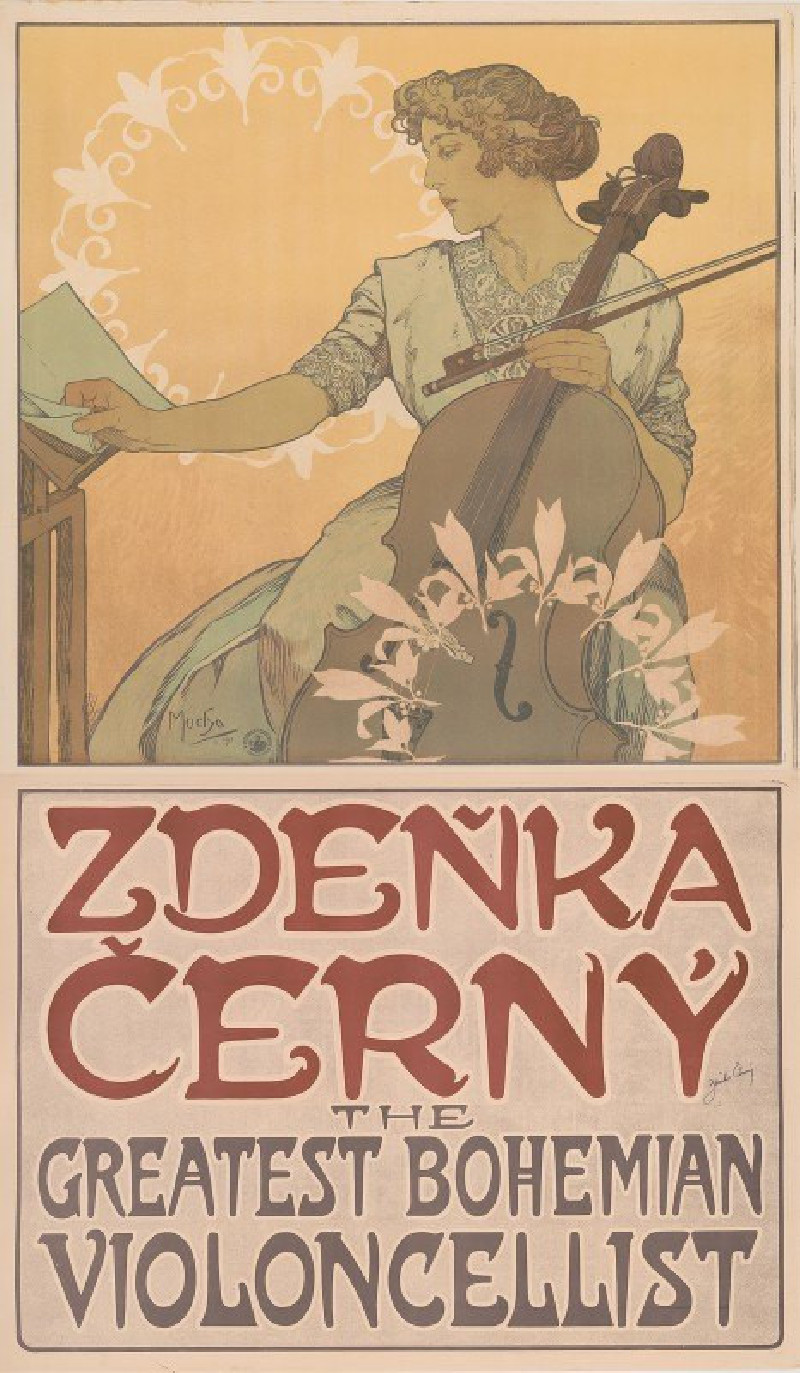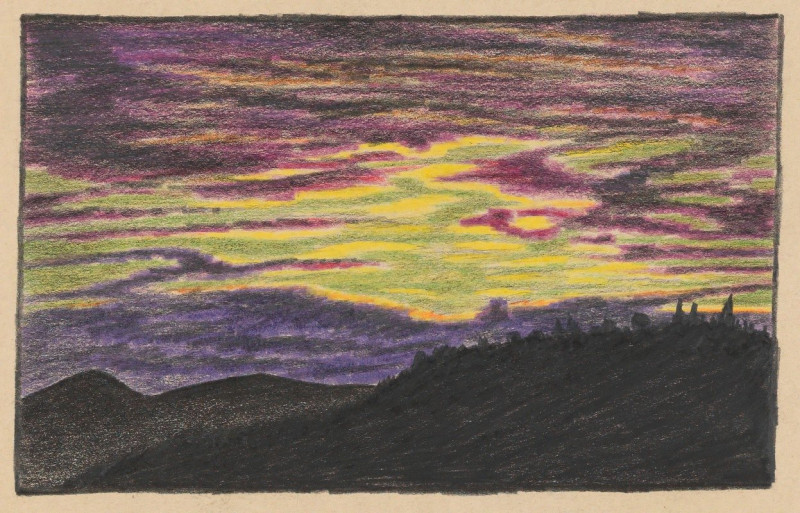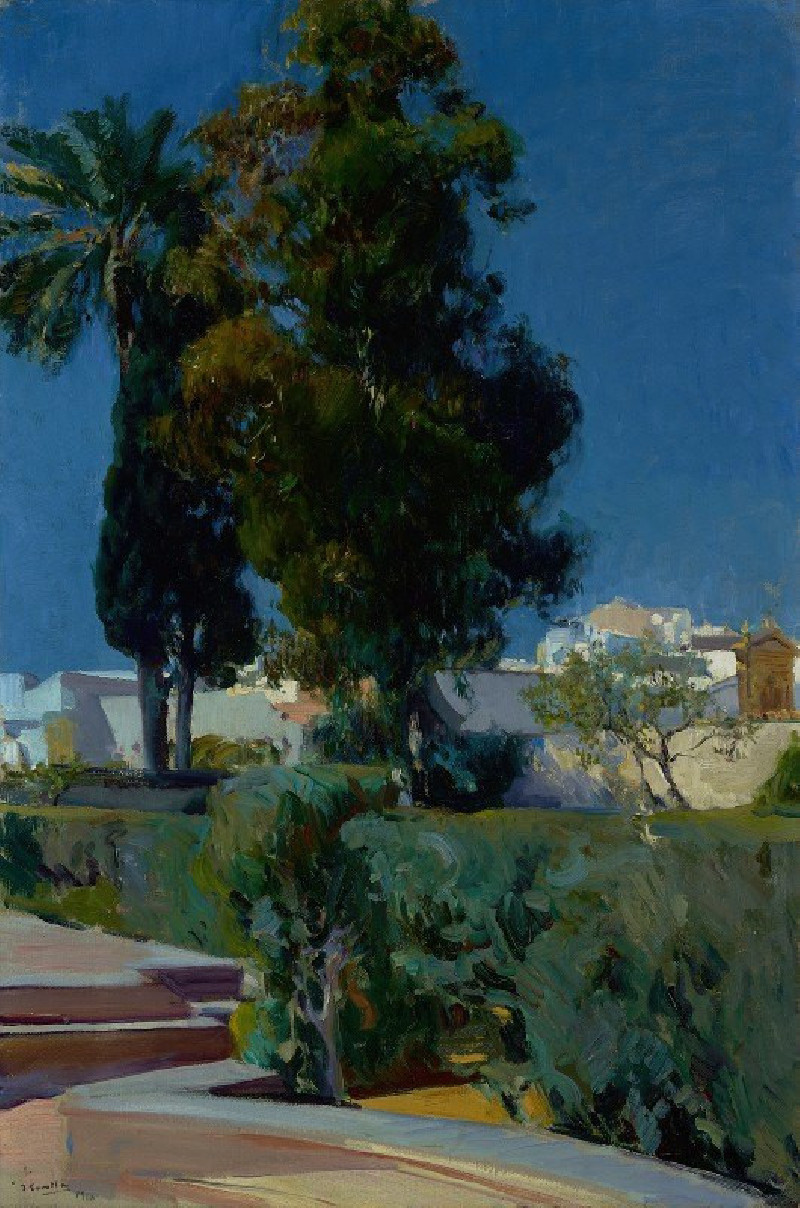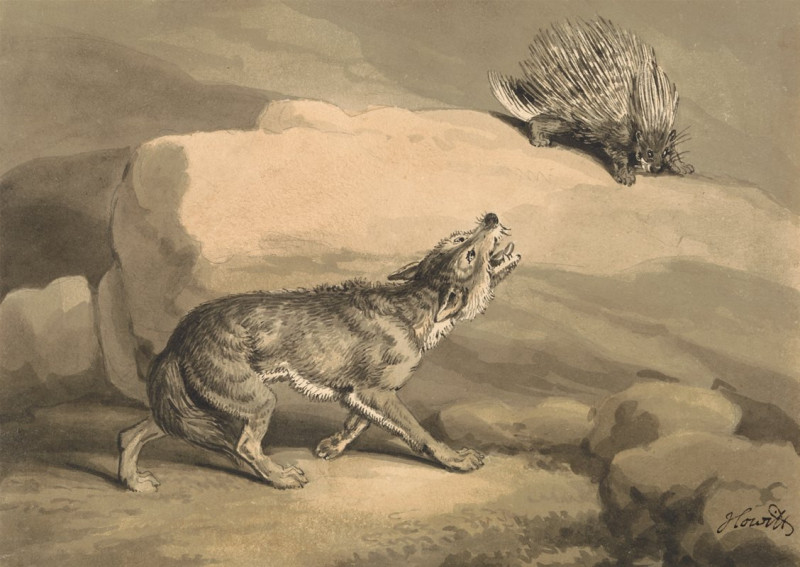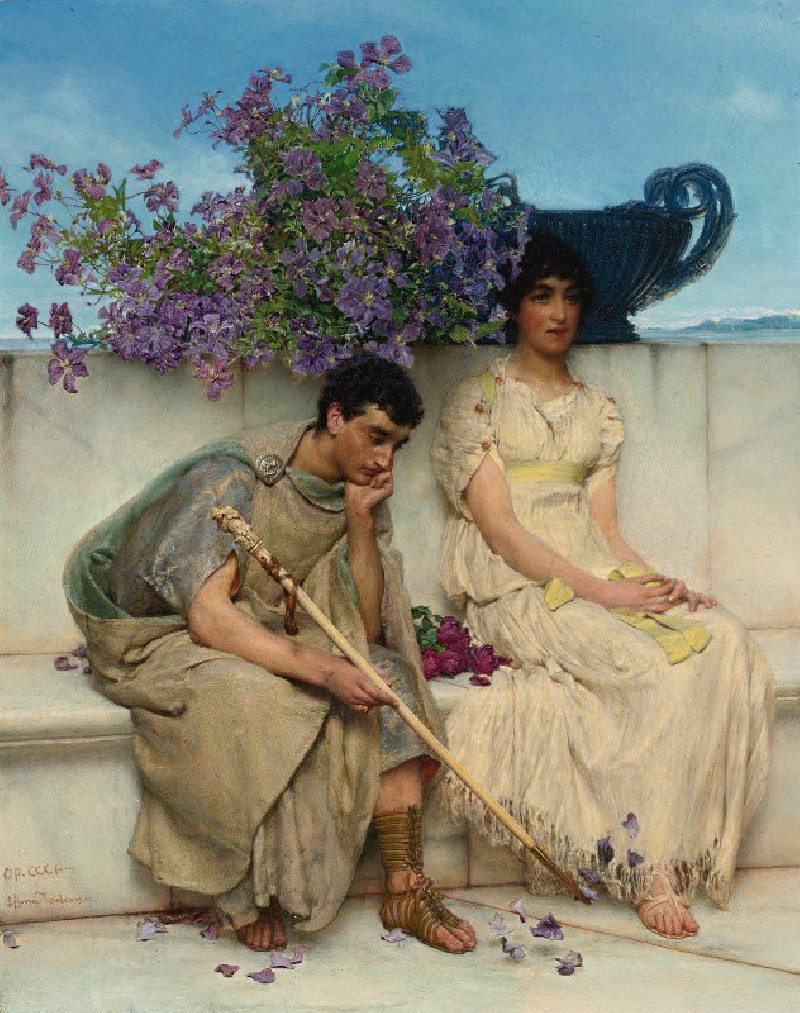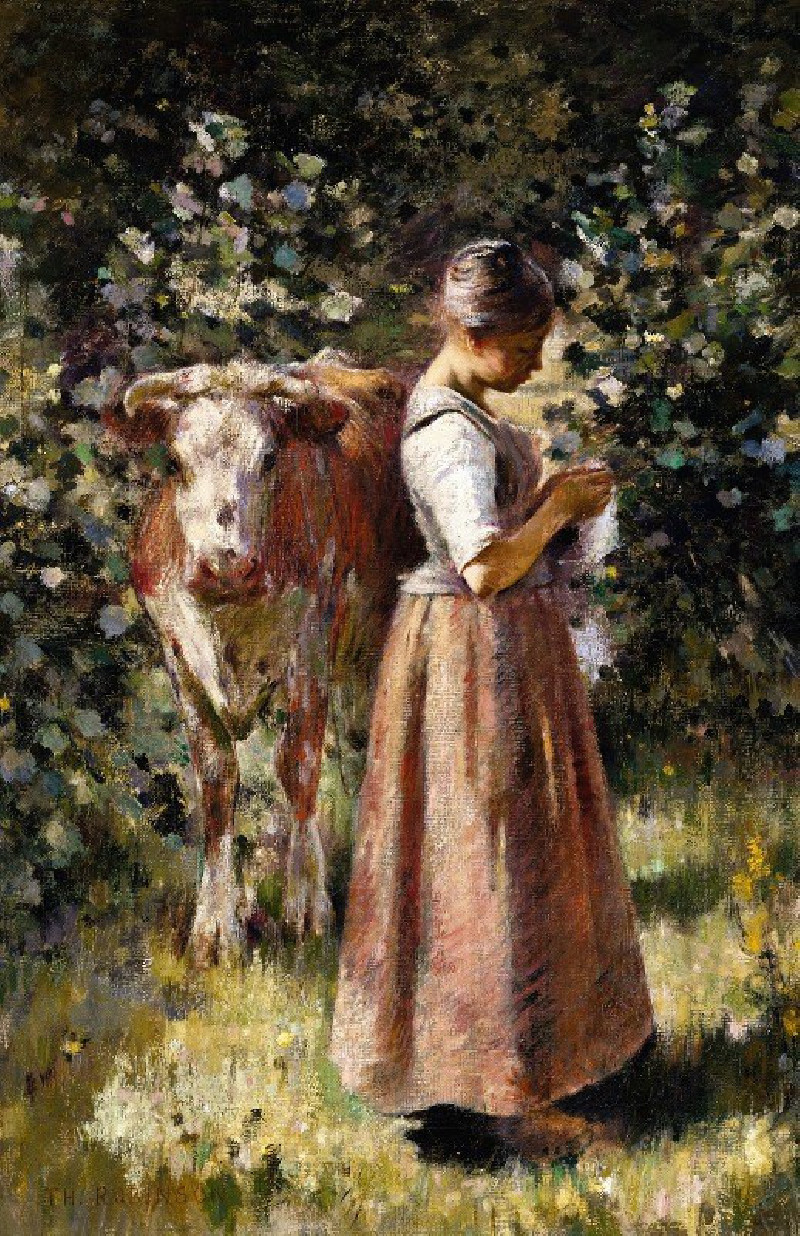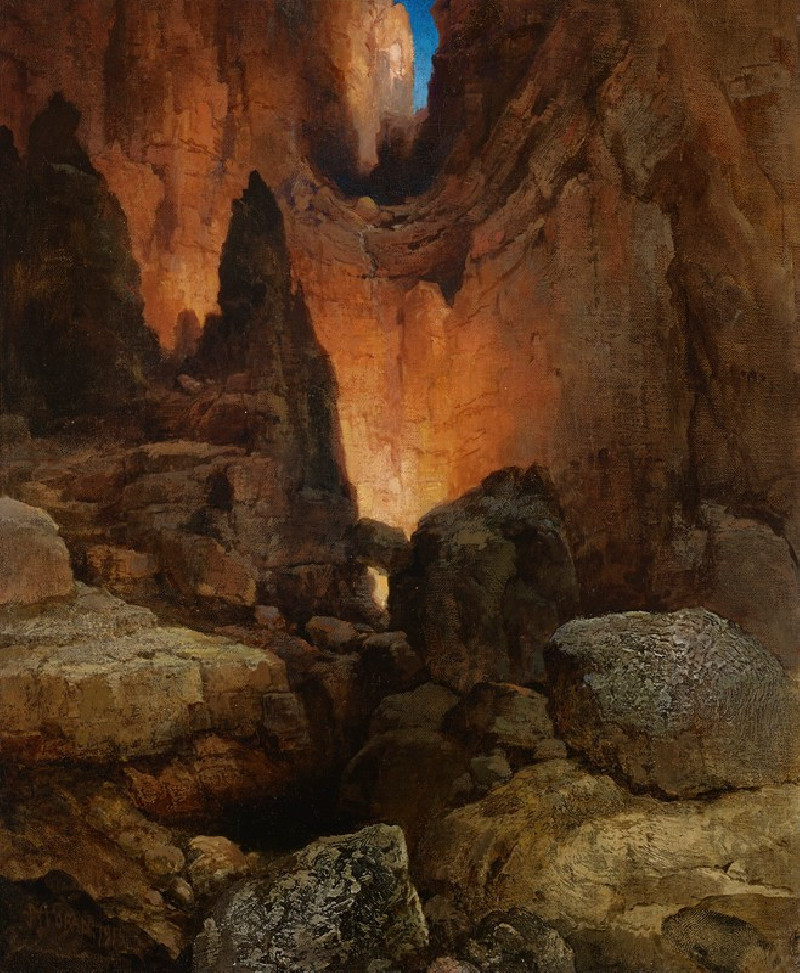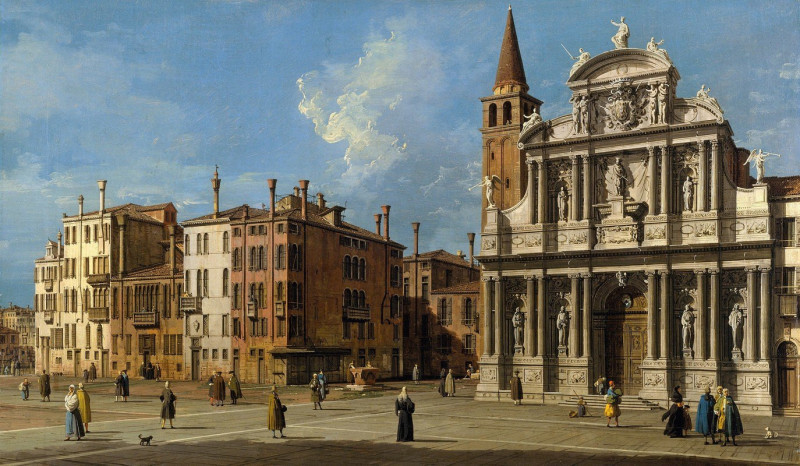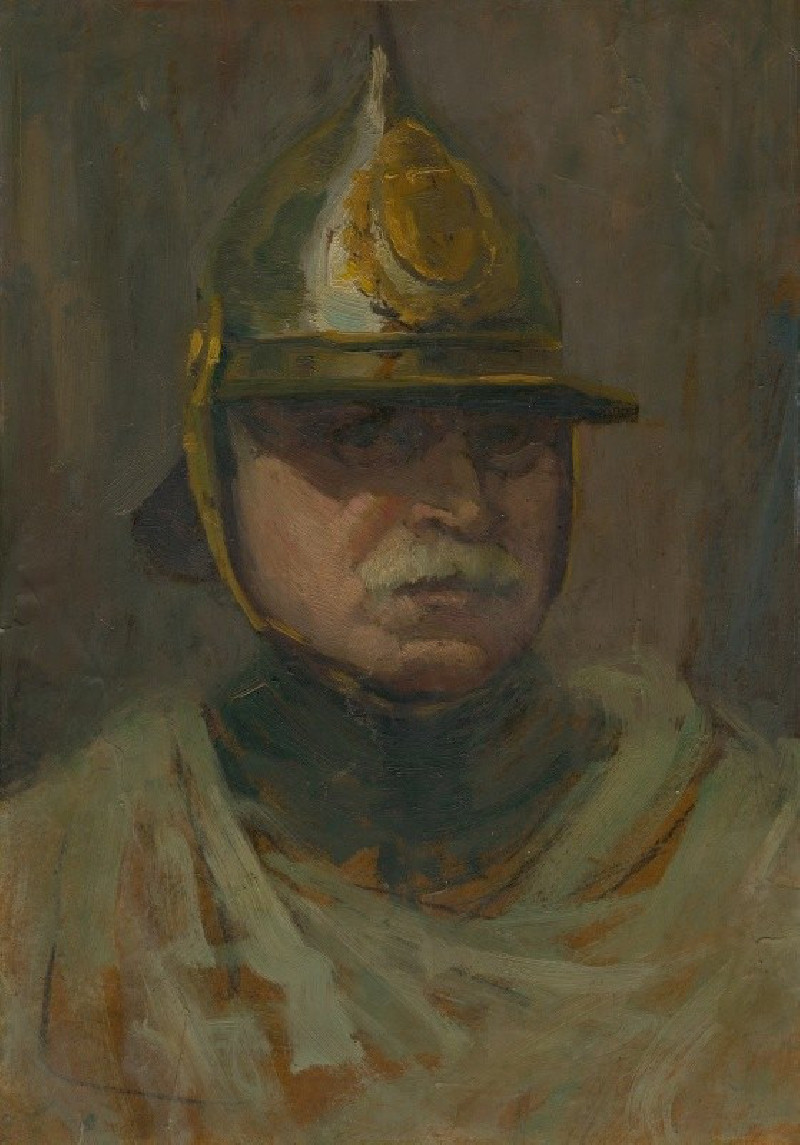Whitman’s chocolates and confections. Philadelphia (1895 - 1917)
Technique: Giclée quality print
Recommended by our customers
More about this artwork
This painting by Alphonse Mucha, part of his famed Art Nouveau style, is an advertisement for Whitman's Chocolates and Confections of Philadelphia, likely created sometime between 1895 and 1917. The artwork features a striking portrait of a woman, exemplifying Mucha’s renowned style that includes intricate, decorative elements and a strong sense of beauty and grace.The woman in the painting is depicted in profile, her face elegantly turned to the side with a serene and thoughtful expression. Her hair and ornamentation are highly stylized, flowing with organic lines and adorned with elaborate jewelry that includes gems, leaves, and possibly floral motifs, all common elements in Mucha’s work. Her attire is luxurious, with delicate embroidery and decorative motifs that suggest a sense of opulence and artistry.The background and borders of the image are richly detailed, mimicking the appearance of mosaic tiles found in traditional Byzantine art. The colors are harmonious, with a balanced palette that emphasizes earth tones mixed with blues and golds, thereby enhancing the overall ornamental quality.Above the figure, the word "WHITMAN'S" is prominently displayed in bold lettering, contributing to the advertisement's purpose. The mosaic-styled backdrop integrates the name into the overall artistry, rather than making it feel like a separate element.
Delivery
Returns
Alphonse Maria Mucha also know internationally as Alphonse Mucha (1860-1939), was a Czech graphic artist, painter and illustrator. He lived in Paris during the Art Nouveau period, and is best know for his noticeably stylized and decorative theatrical posters like those of Sarah Bernhardt, the most famous actress in paris at the time. Mucha produced paintings, advertisements, book illustrations as well as designs for carpets, jewelry and theatre sets, in what was called the Mucha style. His works featured beautiful young women in neoclassical robes surrounded by flowers which formed as haloes.

